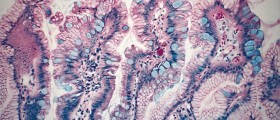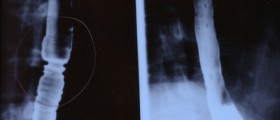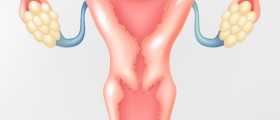
Esophagus is a 10 inch muscular tube that is a part of digestive system. Food and liquid enter the mouth, go down the throat, through the esophagus and enter the stomach. Esophagus walls consist out of several layers. Lining layer (mucosa) is the inner layer that is moist and allows food to pass through. Submucosa contains the mucus glands that keep esophagus moist. Muscle layer conducts the food down to the stomach. Outer layer covers the esophagus.
Types of Esophageal Cancer
Esophageal cancer has two main types which are both diagnosed and treated in similar way. These two types both develop in the inner lining layer cells.Adenocarcinoma is usually diagnosed in the bottom part of esophagus close to the stomach. This is the most common esophagus cancer in the US and the percentage numbers have been increasing since 70s.
Squamous cell carcinoma is usually diagnosed in the top part of esophagus. The number of cases of squamous cell carcinoma is decreasing in America, but is still the most common type worldwide.
Esophageal cancer risk factors
Although the exact cause of esophageal cancer is unknown, there are certain risk factors that increase the probability of certain people to develop esophageal cancer.
These risk factors include being male, of age 65 or older, heavy drinking, smoking, low fruit and vegetable diet, obesity, acid reflux and Barrett esophagus.The top factor seems to be age. The older the person, the more chances are of being diagnosed with esophageal cancer. According to research so far, men seem to be three times more likely candidates. Heavy drinking category includes people who have over three alcoholic drinks per day. Alcohol and cigars increase risk of squamous cell cancer.
Studies imply that lack of vegetables and fruit in individual’s nutrition increase the chance of esophageal cancer. The diet studies are not always consistent and therefore this claim requires further research. Obesity increases the risk of adenocarcinoma cancer, close to the stomach.
Acid reflux is a disorder that includes backward flow of stomach acid into the esophagus. After long period of time the acid may damage the esophagus lining layer and increase the probability of developing adenocarcinoma cancer. Another condition caused by acid reflux is known as Barrett esophagus. This condition means that the cells in the lower part of the esophagus have become abnormal. Barrett esohpagus also increases chances of adenocarcinoma cancer.
It is important to realise that risk factors are only statistics. This does not mean that people will develop esophagus cancer by having any of the risk factors. Most people with the risk factor symptoms never develop esophageal cancer.

















Your thoughts on this
Loading...